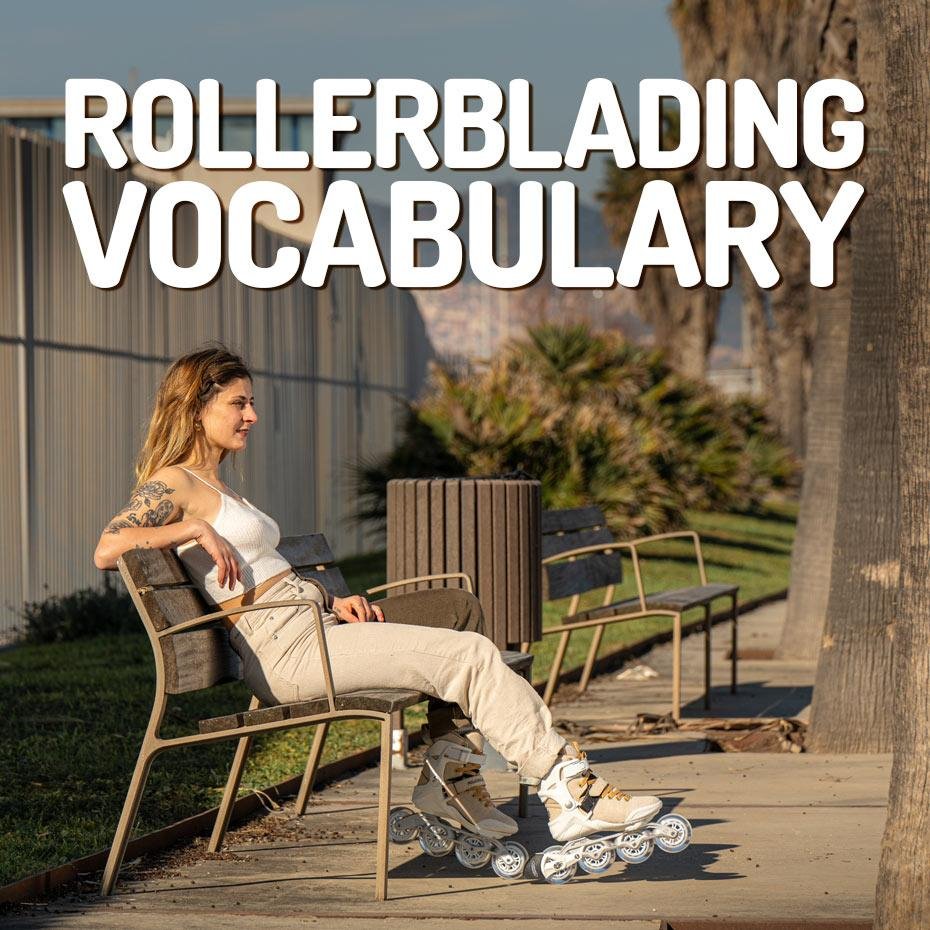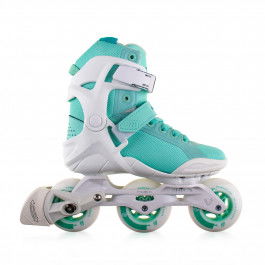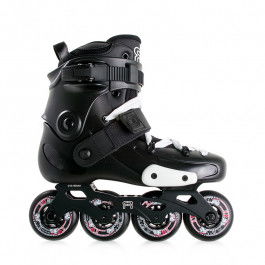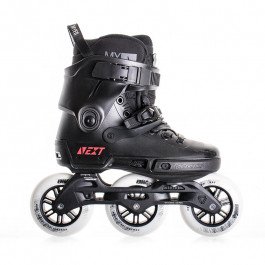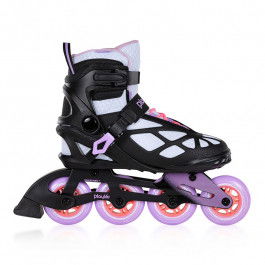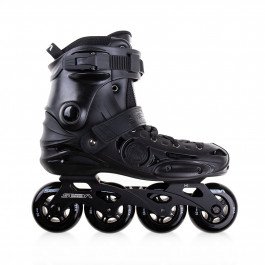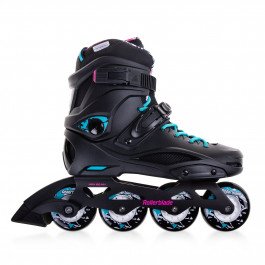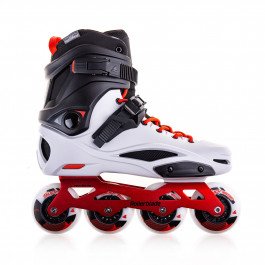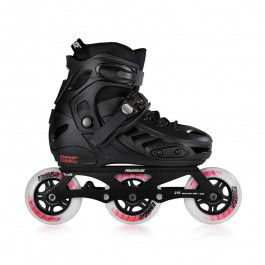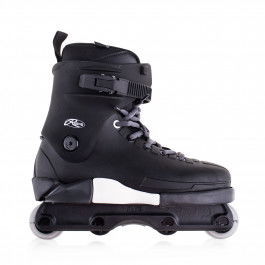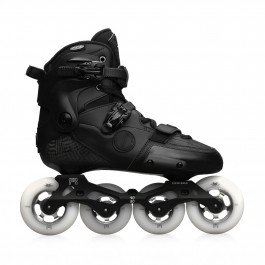Have you ever wondered what the terms used in our articles, tables and descriptions of rollerblades mean? We have prepared a glossary of basic concepts for you, to make them easier to understand!
So, you have decided to buy rollerblades. Congratulations - it is probably one of the best decisions in your life. After all, rollerblading, in any of its many forms, is pure fun!
Still, it can be hard to get into world of inline skating. Beginners struggle with many dilemmas. Which rollerblades to choose? Which brand? How to measure feet? What size to get? We've already discussed many of these things on our blog. But to understand all of this content, you need to know basics.
And today you will read about absolute basics. We will help you understand terminology, to make it easier for you to choose your dream pair of skates.
We will divide this text into two sections - terms related to the boot and everything below it.
Glossary of technical rollerblading concepts - rollerblading boots.
Boot - this is the most important element, as it is responsible for comfort, lateral ankle support, and immobilization of the foot, especially the heel. Let's pause here for a moment.
A poorly chosen boot, even a high-class one, will ruin your enjoyment of the ride! Leaving more room for a “thicker sock” is a harmful myth. The boot should fit well, but not cause discomfort.
Foams adjust over time to our anatomy, creating some additional space inside. This is not a problem in a well-chosen boot, but in one that is too large, the foot begins to shift, resulting in poorer control over the rollerblades, a lower degree of comfort, and painful bruising. The soft parts of the boot also wear out faster.
Hardboot – a type of boot construction. If you've ever seen ski boots, you know what this is about. The outer shell is made of durable synthetic material, with a soft boot residing inside.
Rollerblades equipped with such a boot are great equipment for learning to ride, as they combine stability with comfort. This is the type of equipment not only most often recommended by rollerblading instructors, but also most often chosen by them for daily work with students. It combines durability, support and comfort all in one package.
Softboot - another type of boot construction. It has a light, external plastic skeleton. The softer upper, modeled after a comfortable pair of sneakers or running shoes, is attached to it. Softboots are considered the most comfortable of all skates because of their low weight and good air circulation.
Nowadays, it is extremely rare for this type of construction to be used in the production of rollerblades other than recreational and fitness.
One-piece boot with integrated padding - the template is very similar to that of hockey skates. It has a rigid inner shell made of synthetic material or carbon. In the case of speed skates and rollerhockey ones, we often deal with hybrid solutions, in which the base is divided into several zones of different composition and thickness, in order to better adjust the boot during heat molding.
This shell is essentially a core to which the upper, lining, and all other elements are attached.
Such rollerblades are usually much more expensive than others and are used in demanding disciplines such as speed skating, freestyle slalom, aggressive skating, or roller hockey.
In return for a higher price, they are lighter than others and offer a higher level of rigidity, and hence improved responsiveness and energy transfer to the wheels, resulting in a more dynamic ride.
Cuff - an element providing ankle joint support. It is attached to the rest of the construction using two screws or rivets, which allows for movement of the joint in the front-back line. It is most often made of rigid synthetic material, much less often of carbon.
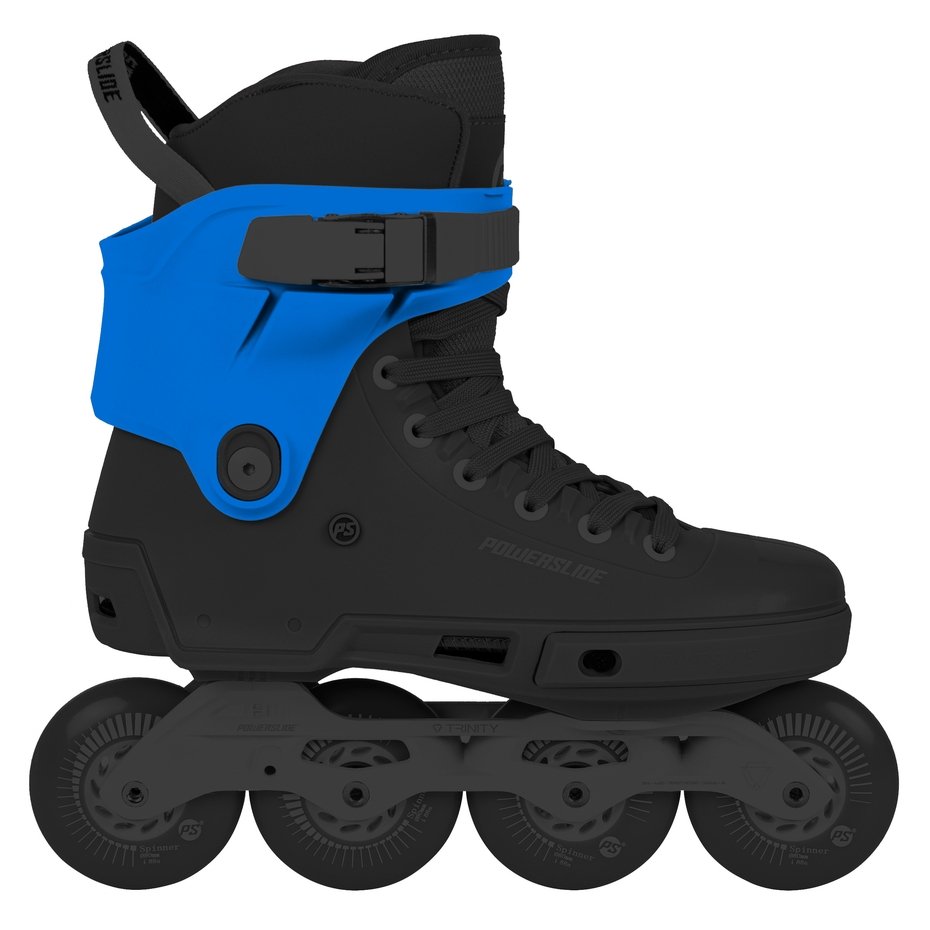
There are rollerblades where there is no separate outer cuff, but the high boot is more reinforced to the very top. The most common examples are hockey rollerblades, although you can also find others with this construction.
There are also rollerblades that lack this element entirely - these are models for speed skating, where the boot ends just above the ankle, very low cut. This gives skater a greater movement range and allows for faster riding with the correct push-off technique.
Canting – a concept transferred to rollerblades from ski boots. It allows for lowering/raising the position of the cuff and gently tilting it to the sides to compensate for bending your legs inwards or outwards.
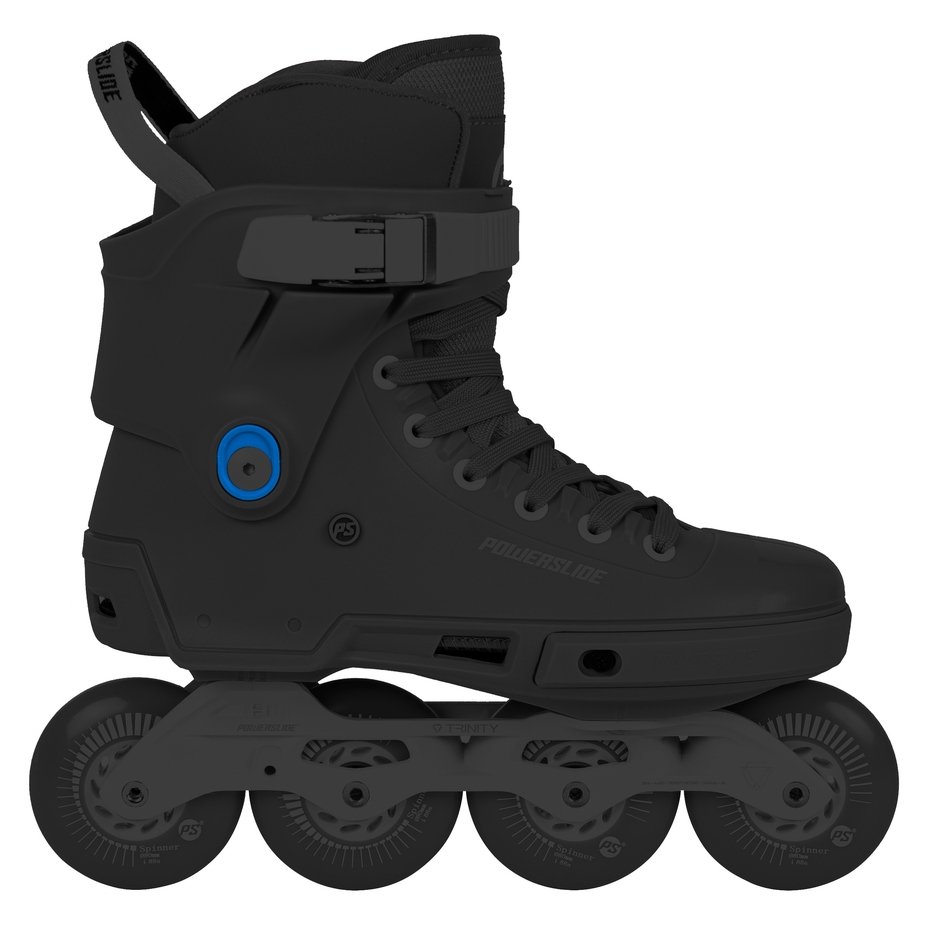
Shell - as we discussed above, this is an element of hardboot skates. All other parts are attached to it.
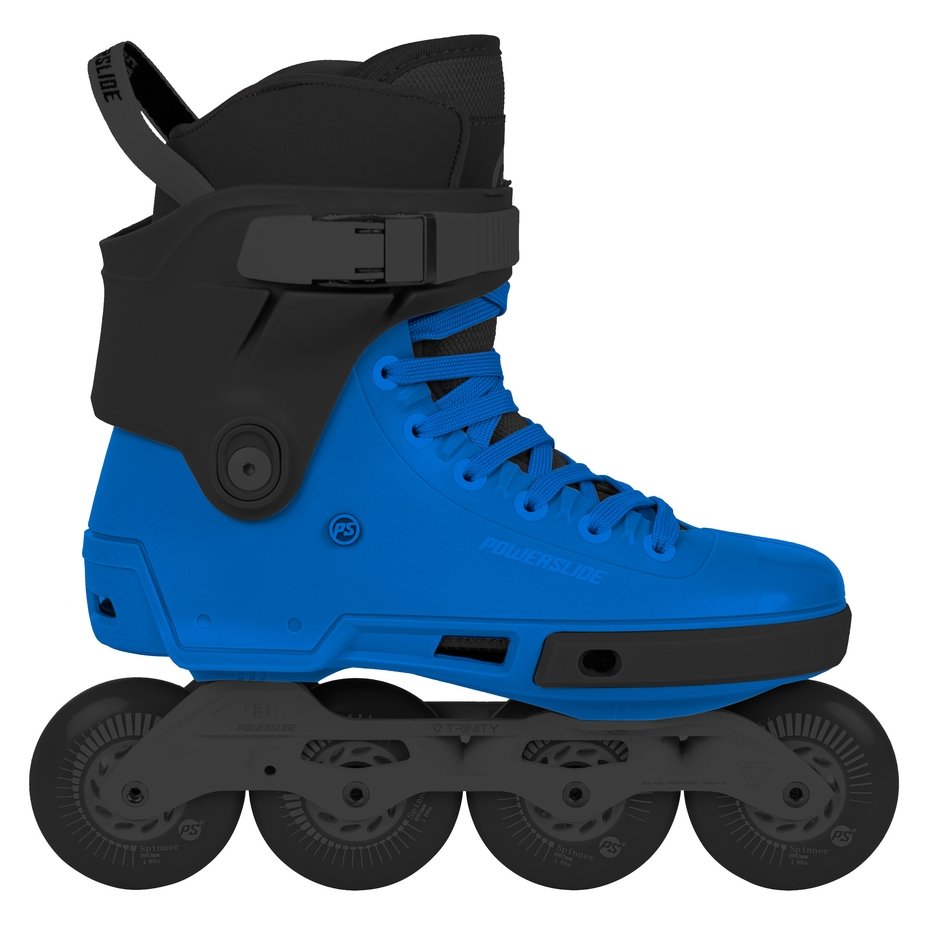
Slider - part that protects the side of the skate (in the case of rollerblades shown on the graphic also the tip) from wear. Used in freeskate rollerblades, sometimes speed skating ones - other types usually do not have it.
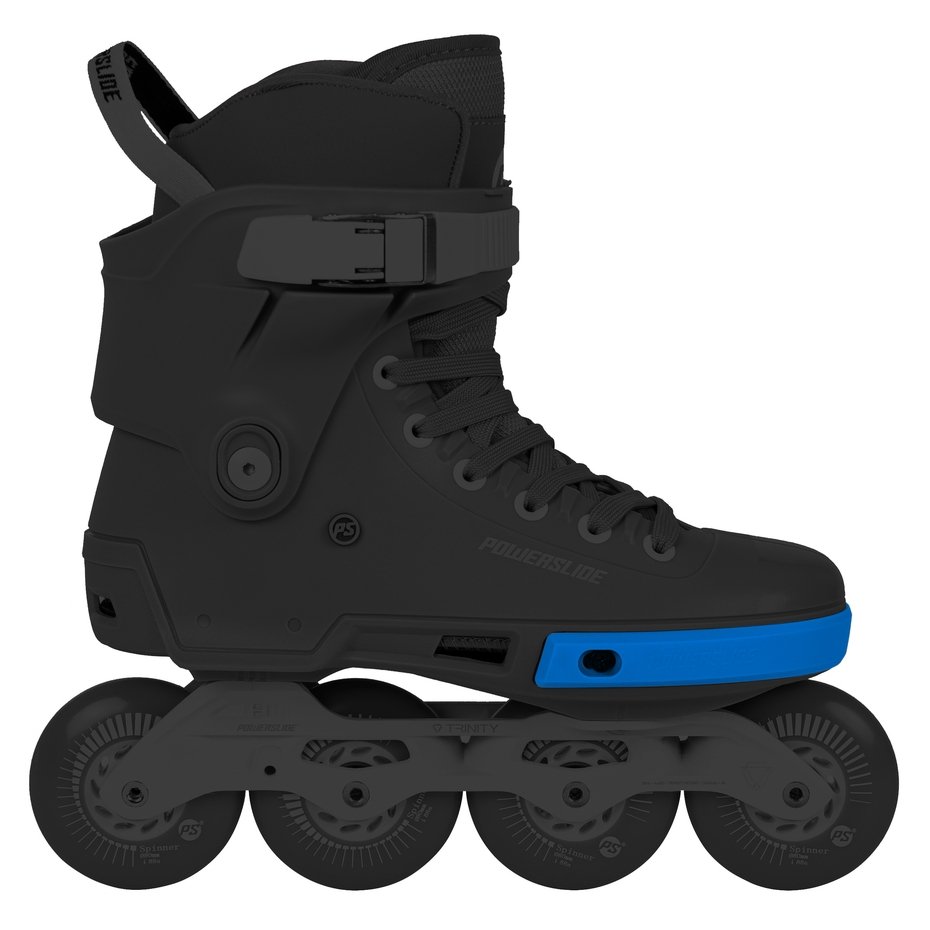
Soulplate - an unique element used in aggressive inline skates for performing tricks in the skatepark, on ledges and rails. It is the part located between the boot and the frame, acting as a surface to grind obstacles with. Soulplates are usually made of hard plastic, most often nylon with various additions.
Liner – the inner boot. Its foams are shaped to provide comfort in a hard shell. Liners can be made of memory foams and/or allow for thermal molding to achieve better fit.
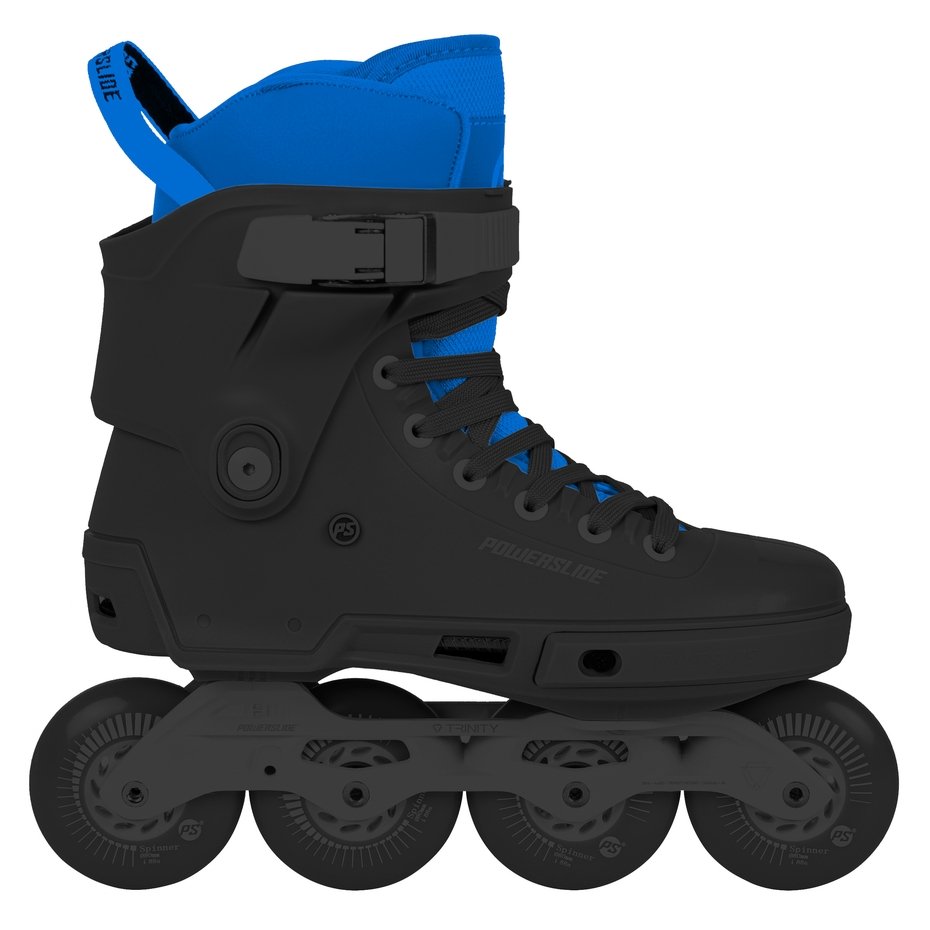
It's worth knowing that liners can be purchased separately - there are various types on the market that allow for better better, more adjusted for your needs fit. The MyFit brand offers a wide range of models, while the most advanced on the market are undoubtedly those from the company Intuition, which other manufacturers are still trying to catch up with, even though it is in business for a long time now.
Padding – these are foams of the softboot, liner, or one-piece boot along with material covering them.
Glossary of technical rollerblading concepts – undercarriage (frame and everything else)
Frame - This is the element located under the boot, in which the wheels are mounted. Calling it a frame makes sense, as it is the main interface between boot and wheels, and a support for a whole structure. It can be made of plastic composite, aluminum, magnesium or in special cases, carbon.
Aluminum frames are by far the most common type, as they meet the requirements of most riding styles perfectly. It is a lightweight and very strong material and furthermore, available in several different alloy quality types and manufacturing process types, giving companies options to create more budget friendly offerings or absolutely top-tier hardware.
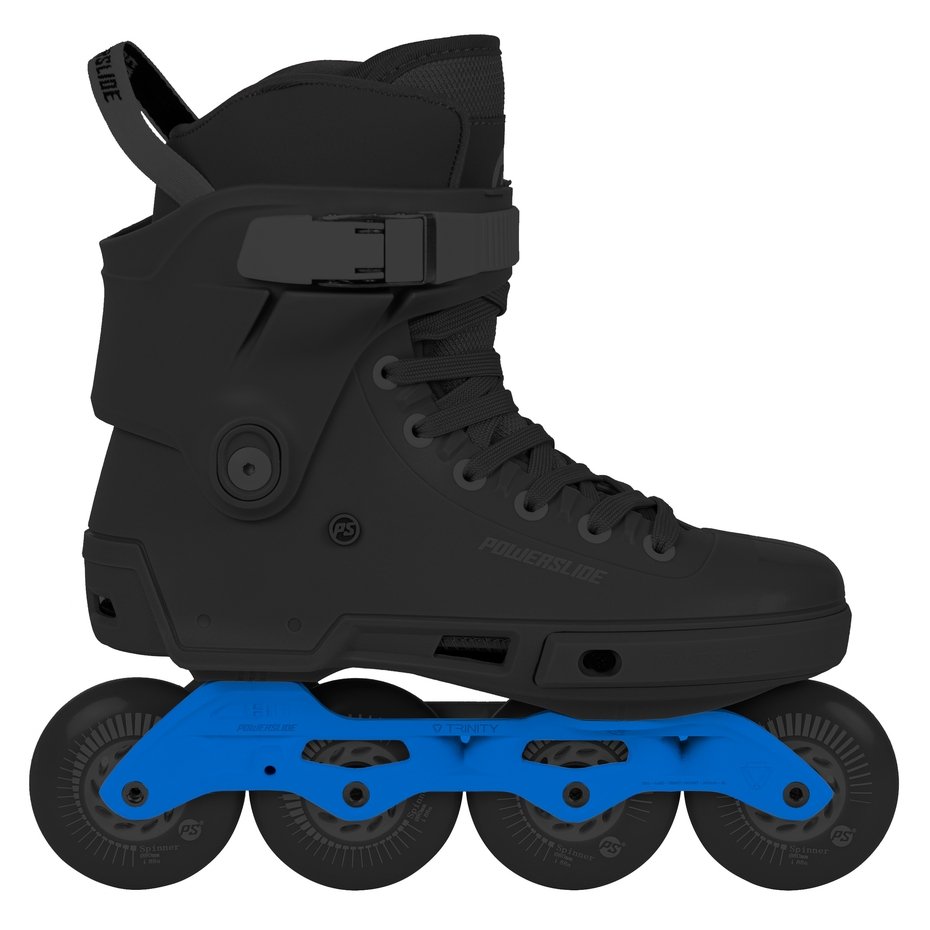
Magnesium is basically the same use scenario, but more rigid, lighter and expensive.
Carbon is used in top tier speedskating frames and rarely in freestyle ones.
Plastic frames are most widespread in rollerblades made for aggressive (skatepark tricks) where they need a bit of flexibility to withstand landings. The plastic mix used in frames is also chosen for its’ sliding capability for grind tricks. They have pretty thick walls to support weight of adult users.
Another example are skates for kids, which are dominated by plastic (composite) frames. This is because kids weight far less than adults.
Last but not least, frame is replaceable in many rollerblades. There are several interfaces allowing you to change frames and we cover them below:
UFS - Universal Frame System. It is a standard for frame mounting mainly used in aggressive skates. Any UFS frame fits any UFS boot. Both frame mounting points are at the same level. There are also nubs around T-nuts in soulplate – they slot into recessed holes in frame. This prevents mounting bolts from damaging frame plastic around them.
165 mm mount, 165 mm v-type, SSM - short speed mount, it literally means that - a short mount for speedskating frames and boots.
It is named like that because its first use was in this type of skates, back when their frames had five smaller wheels rather than four or three larger ones. When it comes to speedskating these days, this type of mount spacing is used only in boots made for children and juniors.
It does have wider adoption in other skating types, though - especially freeskating, where it is the most popular frame mounting type.
The distance between the screws securing the frame to the boot is 165 mm, and the height difference between them is 10-12 mm. The heel is placed higher than the toes.
195 mm mount, 195 mm v-type, LSM
– long speed mount, literally a long frame mount for speed skates.
This is a solution introduced later than SSM, related to the emergence of rollerblades with wheels with a diameter of 100 mm. Its aim is to lower the height of the set by preventing mounting bolt from being placed directly above second wheel, like in case of 4x100 and 4x110 setups with 165 mm mounting. Placing front screw 3 cm to the front makes a lot of sense.
Currently, it is used almost exclusively in speed skates, very rarely in fitness models - and if so, those from absolute top shelf.
Trinity - a type of frame mount developed by Powerslide and used in their skates exclusively.
It uses three mounting points, instead of two like all the others. This removes issue of having front bolt being placed directly above wheels and allows for placing them closer to user’s foot, resulting in lower center of gravity. Powerslide uses this type of mounting in majority of their skates, ranging from fitness models, through freeskates, ones dedicated to freestyle slalom and to speedskating.
Any Trinity frame can be mounted on any boot compatible with this standard, so this is where things get interesting. For example, if you want a freeskating boot on speedskating frame, you can have it.
Unibody - a case where the frame is cast as one piece with the rest of the boot (or its base). Most often used in entry-level recreational skates and models for kids. A notable exception to this rule are USD Aeon aggressive skates.
In addition to the above types of mounting, the frames can be attached with rivets, permanently
Polyurethane, urethane - a bouncy material from which the "tires" of wheels are made. Contrary to popular belief, rollerblade wheels are not made of rubber! The quality of the polyurethane mixture can vary and usually goes hand in hand with the price. More expensive wheels have better parameters and wear out slower.
Core, hub - it can be most simply defined as the rim of a rollerblade wheel. The size, hardness, weight and durability of cores play a major role in how wheels behave and for what type of skating they can be used. A bit of interesting trivia here - there are speedskating wheels created strictly for racing on a track, where skaters take only left turns. Their cores are designed to channel more energy into one direction!
That's all (for now).
The terminology associated with rollerblading is much richer, but we won't be confusing you here. The rest relates to individual riding styles and the equipment for them. You can expect more articles on this topic, but in the meantime, we encourage you to check out our other guides on the blog.


